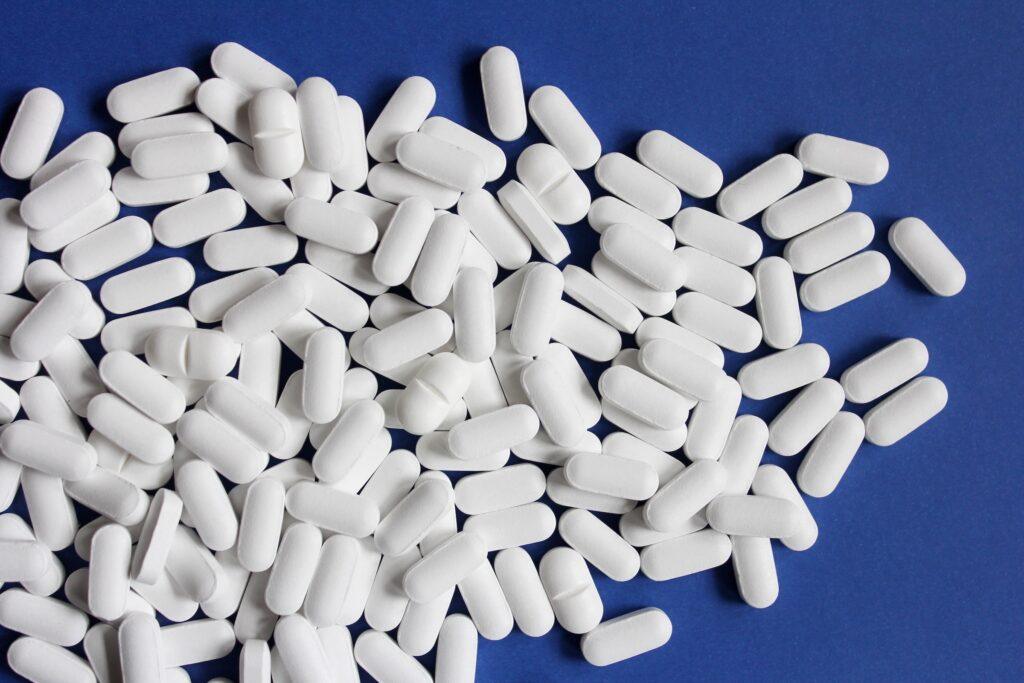
The two most commonly prescribed forms of oxycodone are Percocet and OxyContin. The former combines oxycodone with the mild analgesic acetaminophen, the component found in Tylenol. This is considered a fast-acting version. It begins to relieve pain within 15 to 30 minutes, and continues to do so for 3 to 6 hours. It is used for short-term treatment of moderate to severe pain.
Used for moderate to severe pain, Oxycontin was supposed to be less addictive as it provides extended-release of oxycodone over a 12-hour period. However, all forms of oxycodone are still regarded as of high risk for addiction and are considered a Schedule II controlled substance.
Typically, doctors prefer people use drugs less powerful prescriptions like paracetamol or OTC medications like aspirin and ibuprofen if possible. However, cancer, burn damage, serious injury, and post-operative pain relief may require oxycodone.
Oxycodone and the Brain
In a nutshell, oxycodone interacts with and attaches to opioid receptors in the brain, which causes chemical changes. Individuals who take oxycodone will feel a great sense of relief from pain as well as pleasurable sensations.
The Role of Endorphins
Endorphins, particularly the category known as beta-endorphins, are neuropeptides that the body uses to naturally manage pain.
Involved with naturally occurring reward circuits, they have a role in pain management. They are stored in the anterior pituitary gland, where they are created. In the peripheral nervous system, they bind to opioid receptors, particularly those called mu subtype receptors. In the central nervous system, they bind with these to inhibit GABA and increase the production of dopamine, which is important for feeling pleasure.
Opioid medications such as oxycodone are prescribed precisely due to their ability to mimic natural endorphins. These substances produced by the human body are called endogenous opioids. When they interact with opioid receptors, the person feels euphoric, elated, and pain-free. Oxycodone has the same effects when it interacts with opioid receptors. In fact, both euphoria and feelings of pleasure can be pronounced. But oxycodone also has many side effects and can cause negative side effects to the user’s brain.
Dangers of Misusing Oxycodone
It is important to only use oxycodone under medical supervision and never as a recreational drug. One danger is that it can slow down or even stop the natural generation of dopamine. Continued use of oxycodone can lead to dependence as the brain seeks dopamine from drugs instead of generating it.
Some negative effects of this type of substance use dependence are:
- Depression
- Inability to concentrate
- Tremors
- Lack of motivation
- Short-term memory loss
- ADHD
- Hard time focusing on daily tasks
Increased Neural Sensitivity to Pain
Oxycodone can actually make the brain more responsive to pain if used for a long time. This is because when pain is blocked for too long, the body tries to compensate.
Frontal Lobe Damage
Long-term use of oxycodone can also lead to impairment of the frontal lobe. Since this is important for executive function as well as memory, it can lead to serious problems.
Impulse Control
Oxycodone can disrupt the brain’s mechanisms for checking impulsive behavior. This is not a risk with short-term, medically supervised usage but if used long-term it can lead to problems.
Use and Abuse of Oxycodone
In 2018, 1.7 million people had a substance use disorder due to the use of prescription pain relief. There are many reasons people take oxycodone. In most cases, it starts innocently enough. Someone has surgery and is dealing with intense pain. He or she may take oxycodone to deal with real symptoms. Most of the time, physicians help their clients to taper off the drug.
However, sometimes there is a need to manage chronic pain or complications occur. The longer someone uses this powerful substance, the greater the possibility of addiction.
There are also those who deliberately abuse oxycodone. They use it to experience euphoria, to get high, for tension relief, or to enhance other drugs. Those with substance use disorders may crush, snort, chew, or inject it, or, if they have a prescription, they will take a higher dose than they were prescribed. As discussed, a tolerance can develop. This means the person needs more oxycodone to get the same effects. This can lead to full-blown addiction. Why are people willing to risk dependency on oxycodone? Because high doses produce feelings of euphoria, relaxation, and pleasure, as well as reducing anxiety and stress. What is insidious – the use of this opioid inhibits the body’s own abilities to generate natural substances like dopamine. This can lead to a variety of problems.
Side Effects of Oxycodone Use
Even if someone is only taking appropriately prescribed dosages of oxycodone, he or she may experience side effects. The longer the time-frame and larger the amount, the more likely a problem could occur. Of course, oxycodone affects people differently.
People who are abusing the substance will experience many of the following psychological, cognitive, and behavioral symptoms:
- Mood swings
- Problems concentrating
- Poor decision-making
- Aggression
- Paranoia
- Absence from work or school
- Memory lapses
- Feeling uninterested in life
- Insomnia
- Not being able to quit
They may also experience the following physical symptoms:
- Slurred speech
- Exhaustion
- Weight loss
- Decreased heart rate
- Constipation
- Drowsiness
- Respiration issues
- Noticeable weight changes
- Disheveled clothing
- Poor hygiene
If someone taking oxycodone exhibits these symptoms, it is likely a cause for concern. It is very important the person seeks help. Treating oxycodone dependence is not easy. Research has discovered many possible reasons why people battle with oxycodone use and addiction.
Factors that can Contribute to Oxycodone Use Disorder
If immediate family members have a history of addiction, that can be a contributing factor to oxycodone dependence. So are traumatic experiences, addiction to alcohol and other drugs, genetics, and even outside influences. Lack of social and emotional support, poor coping skills, or easy access are other possible factors.
Oxycodone Addiction Risk Factors
There are several factors that increase risk of addiction. One of the most addictive practices is to change the method of delivery to snorting or injecting. This can cause an accidental overdose, particularly if an extended-release version like OxyContin is used.
Taking larger doses in general, along with the time-frame involved, all play a role. Even a few extra days of taking oxycodone increases the risk of addiction.
Known risk factors include:
- Poverty
- Unemployment
- Family or personal history of substance abuse
- Young age
- Criminal history, including DUIs
- Regular interaction with high-risk people or environments
- Mental disorder
- Risky behaviors
- Heavy tobacco use
- History of severe depression or anxiety
- Stressful circumstances
- Prior drug or alcohol rehabilitation
Women tend to have a higher risk of oxycodone addiction. They are more likely to have chronic pain and to be prescribed opioid medications. They are often given higher doses to combat pain.
Oxycodone Addiction Symptoms
Oxycodone use can result in tolerance, dependence, and withdrawal symptoms. Other signs of addiction include:
- Doctor shopping
- Neglecting responsibilities and relationships to use oxycodone
- Spending large sums of money and excessive time looking for and using oxycodone
- Continuing to use oxycodone despite consequences
- Stealing or forging prescriptions
- Stealing from or asking others for oxycodone
Is it Possible to Overdose on Oxycodone?
Opioid overdose is common for individuals who become addicted to oxycodone. As tolerance develops, a person may feel temptation to increase their dosage, resulting in an accidental overdose.
Mixing alcohol or other drugs such as cocaine, other opioids, or benzos with oxycodone can result in an overdose. Associating with illegal traders can also cause this issue. Lately, dealers have sold pills that, while they look like Percocet, actually contain fentanyl. These pills are very dangerous.
No matter what the reason for the overdose, it is important to immediately contact emergency services. Often, they can use Narcan to reverse the effects of the overdose and save the person’s life.
When to Call 911
If someone in your life is using oxycodone, you need to call 911 if they:
- Have labored breathing
- Are nodding out
- Have clammy skin
- Have blue lips or fingertips
- Become unconsciousness
- Have a slow heart rate
- Experience disorientation or confusion
Consequences of Oxycodone Addiction
Chemical dependency can result in:
- Suicidal thoughts
- Sexual dysfunction
- Legal problems
- Family discord
- Arrest and/or incarceration
- Relationship issues
- Vision problems
- Unemployment or school dropout
- Damage to organ systems
- Self-harm
- Social isolation
- Financial problems
Symptoms of Oxycodone Withdrawal
A person who is addicted to oxycodone will experience withdrawal symptoms when they stop taking it. These symptoms, which range from irritating to unbearable, include:
- Watery eyes
- Nausea
- Runny nose
- Tremors
- Tics
- Shaking
- Muscle spasms
- Intense cravings
- Insomnia
- Sweating
- Painful cramping
- Diarrhea
Treatment Options for Oxycodone Addiction
It’s important to seek professional help via a certified opioid treatment program (OTP) when dealing with oxycodone addiction. Federally regulated, these programs follow specific guidelines.
Each client is individually evaluated, and their program is tailored to their specific needs. Medical detox is provided to help with the process of withdrawal. These facilities must offer medical detox to assist with the oxycodone withdrawal process. Because of the individualized approach, additional medications and supplements might be offered to one client while another might be encouraged to taper, and others might need different modalities.
Granite Recovery Centers provides medical detoxification for people who do not need immediate medical intervention, are not a danger to themselves, and are capable of self-evacuation in the event of an emergency.
Medically assisted treatment, or MAT, may be offered. Using particular proven medications like Suboxone, Vivitrol, or methadone to replace oxycodone may be a good choice for someone struggling to stay sober.
Additional Treatment
After detox, a client transitions into the best treatment program for their particular situation. Vocational and educational programs, counseling and therapy, ongoing medical treatment, group sessions, and holistic modalities are all considered.
As clients experience recovery, additional support is offered to create the best long-term outcome. Outpatient services, sober living facilities, transitional housing options, and community services can all help clients achieve a healthier sober life.
While dealing with oxycodone addiction is hard, clients can feel hopeful in our treatment programs as they see the light at the end of the tunnel. Call for more information about our treatment options and talk to our knowledgeable and caring staff to plan your steps to recovery.

